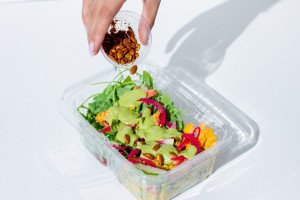One Argument for Buying These Items Organic, According to New Research
If you weren’t already opting for organic meat and milk during your weekly grocery trips, new research might have you making the switch: According to a meta-analysis of studies, performed by an international team of scientists, levels of omega-3 fatty acids — key when it comes to lowering inflammation and risk of heart disease, and also linked to improved neurological development and function — are 50 percent higher in organic meat and milk than they are in the conventional stuff, the New York Times reports.
Why, you ask? The answer is surprisingly simple: Animals raised organically are required to have similar living conditions to their natural environments, which means dairy cows and beef cattle graze on grass. Grass has higher levels of omega-3 fatty acids than grain feed, which is what conventionally raised animals usually eat. As one of the researchers told the New York Times, “It’s not something magical about organic. It’s about what the animals are being fed.”
The scientists looked at nearly 200 scientific papers on milk and 67 papers on meat in their research. One downside of the meta-analysis is that, due to a limited amount of prior research on the subject, scientists couldn’t narrow in on different types of meat.
So, what does this mean for our health? Well, when it comes to its levels of fatty acids, more research needs to be done in order to actually say organic meat and milk is better for you. But, as one professor of nutritional scientists told the New York Times, “Based on the composition, it looks like they should be better for us.”
And if this has you wondering about whether you should reach for organic fruits and veggies too, note: This research was conducted by the same team responsible for finding that organic produce boasted significantly higher amounts of antioxidants than the conventional stuff a few years back.
Like what you’re reading? Stay in touch with Be Well Philly — here’s how:
- Like Be Well Philly on Facebook
- Follow Be Well Philly on Twitter
- Follow Be Well Philly on Pinterest
- Get the Be Well Philly Newsletter



